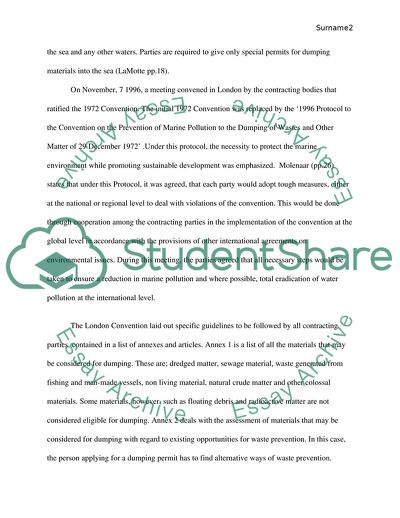Cite this document
(London Convention - an International Treaty to Resolve Marine Pollution as an Environmental Issue Case Study Example | Topics and Well Written Essays - 1250 words, n.d.)
London Convention - an International Treaty to Resolve Marine Pollution as an Environmental Issue Case Study Example | Topics and Well Written Essays - 1250 words. https://studentshare.org/environmental-studies/1761699-choose-an-international-treaty-or-agreement-related-to-environmental-protection
London Convention - an International Treaty to Resolve Marine Pollution as an Environmental Issue Case Study Example | Topics and Well Written Essays - 1250 words. https://studentshare.org/environmental-studies/1761699-choose-an-international-treaty-or-agreement-related-to-environmental-protection
(London Convention - an International Treaty to Resolve Marine Pollution As an Environmental Issue Case Study Example | Topics and Well Written Essays - 1250 Words)
London Convention - an International Treaty to Resolve Marine Pollution As an Environmental Issue Case Study Example | Topics and Well Written Essays - 1250 Words. https://studentshare.org/environmental-studies/1761699-choose-an-international-treaty-or-agreement-related-to-environmental-protection.
London Convention - an International Treaty to Resolve Marine Pollution As an Environmental Issue Case Study Example | Topics and Well Written Essays - 1250 Words. https://studentshare.org/environmental-studies/1761699-choose-an-international-treaty-or-agreement-related-to-environmental-protection.
“London Convention - an International Treaty to Resolve Marine Pollution As an Environmental Issue Case Study Example | Topics and Well Written Essays - 1250 Words”. https://studentshare.org/environmental-studies/1761699-choose-an-international-treaty-or-agreement-related-to-environmental-protection.


